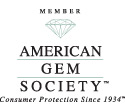Restoring the Ring of GIA founder Robert M. Shipley- A Father’s Legacy
June 12th, 2010 by James L. Sweaney, CGA, FGA. GG
Robert M. Shipley, Courtesy of GIA Library
We thought this would be a great post the week before Father’s Day.
Often at Mardon Jewelers, we’re asked to perform an expert service by a client. Such was the case recently when we restored the ring that originally belonged to Robert M. Shipley, the founder of GIA.
Early in his career, Mr. Shipley realized that the lack of good information about gems was a real problem for the jewelry industry. Without a good base in the science of gems, many jewelers of the time perpetuated misinformation, like using the trade term “Smoky Topaz”– a misnomer for a different mineral entirely, Smoky Quartz, that we still hear even today.
Shipley studied gemology in Great Britain, graduating as the first American FGA, and became a firm believer in education as the proper foundation for a jewelry business. Besides establishing GIA and writing his famous correspondence course on Gemology, Shipley also founded the American Gem Society, a professional organization of jewelers dedicated to fair and honest business practices plus gemological education for both the jewelry professional and the consumer.
His achievements became models for today’s many gemological courses, laboratories, schools, and professional groups– Shipley was truly the father of the modern gemological movement.
This writer is privileged to have been educated in residence at GIA in 1976, to have worked professionally at GIA in both the Gem Trade Laboratory and the Jewelry Arts Progam, and to have known Mr. Shipley personally.

Robert M. Shipley ring, before restoration
We had seen and known of this ring for a number of years– it had been passed down thru the Shipley family from father to son and was in the possession of our client Ed Shipley, grandson of Robert M. Shipley. The ring, a classic 14K yellow and white gold gent’s ring by Jabel, an old line jewelry manufacturer, was set with 3 Old European cut diamonds. Though well matched for quality and size, the two outside stones were badly chipped after years of wear, and the settings were very worn.
We had sized the ring for Ed and had informed him of the condition issues. He was concerned about the damaged stones, whether they would suffer more damage, whether they had value, etc. We discussed the pros and cons of doing a restoration on several occasions.
The pros are that the beauty and utility of the ring are reestablished, the cons are the weight loss to the diamonds and of course the costs to recut the diamonds and rebuild the settings. In addition, considering the provenance of this particular ring, the question was whether to leave it in its original condition as an historic artifact or to repair it to usable condition.
We consulted several jewelry experts who knew Robert Shipley and of course, got mixed opinions. Original condition is extremely important in furniture, where original paint or finish is often a substantial part of an item’s value. Jewelry, on the other hand, is often repolished and repaired so it’s utility and use are especially important. In the end, Ed chose to have the ring made whole again.
We first removed the three stones from the mounting so that we could examine the damage more closely. From left to right, they weighed .97 ct., 1.15 ct., and 1.11 ct. Note that the chip on the stone on the right goes more than halfway across the top of the diamond.
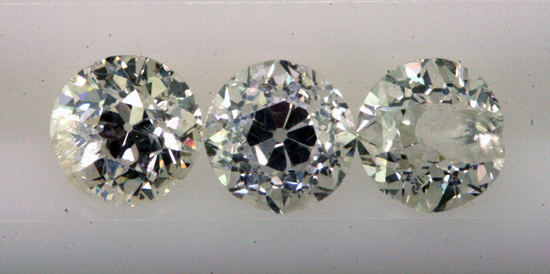
0.97 ct, 1.15 ct, 1.11 ct. Old European cut diamonds
Even though diamonds are extremely hard, they have grain like a piece of cedar wood. A sharp blow can cause a split along the direction of the grain. Old European cut diamonds often have thin girdles (the outer edge of the stone) and are prone to chipping. We often see chipped Old European cut diamonds, but the chips usually start at the girdle and go down the underside of the diamond.
The only way to correct damage this severe is to recut the diamond. The damaged area is ground away and the stone is reshaped and refaceted. Girdle chips are often very shallow so the weight lost in recutting can be quite minimal. The problem here on both stones was that the chips were on the crown and were very deep, so the weight loss was likely to be substantial.
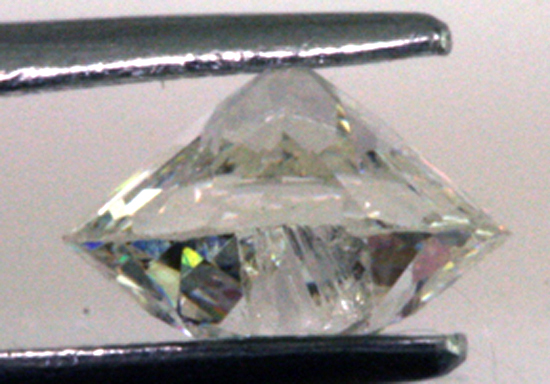
Chip on crown of .97 ct. Old European and thin girdle
Our preliminary assessment was that the 1.11 ct. would lose much more weight than the 0.97 ct., while the center stone was in good condition and needed no repair. This meant that even if the .97 could still match the center, the 1.11 would have to be replaced.
We chose to send the diamonds to Michael Goldstein, Ltd. of New York city, a firm specializing in old diamond cuts. They confirmed our opinion that the two damaged stones would no longer match after recutting and estimated the recut weight of the larger stone to be around .60 to .70 ct.
After their expert recutting, the 1.11 ct. went from a diameter of 6.55 mm to 5.81 mm, while it’s recut weight was .75 ct.– we’ve learned over the years that diamond cutters hate losing weight more than anything, and will do their best to exceed their weight loss estimate. The recut stone is beautifully made, retaining its old style cut and charm. The .97 ct. stone lost .10 ct., end weight of .87 ct., but regained it’s true sparkle and beauty.
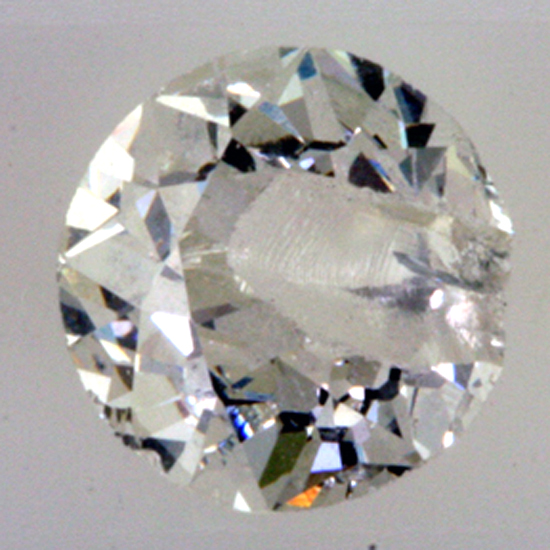
1.11 Old European, before recut
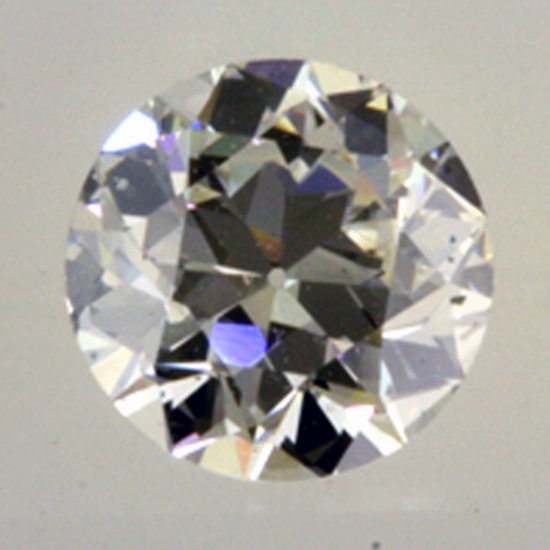
After recut, .75 ct.
We were also able to secure a perfect matching stone of .88 ct. from the Goldstein firm. Not only was the diameter a good match, all three stones for the ring are graded VS1 J!
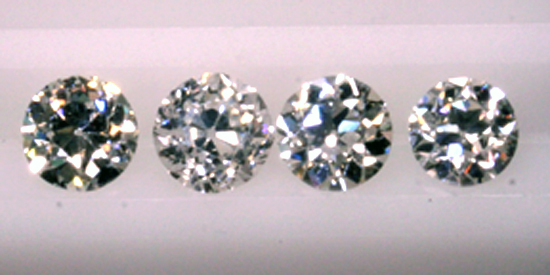
.87 repaired, 1.15 original, .88 replacement, .75 repaired
We brokered the replacement diamond and for a relatively modest labor cost, we were able to restore this grand old ring to it’s original presence and to resurrect the beauty of a badly damaged diamond and salvage a good amount of its monetary value. And you can see from his testimonial that grandson Ed will proudly wear his grandfather’s ring.
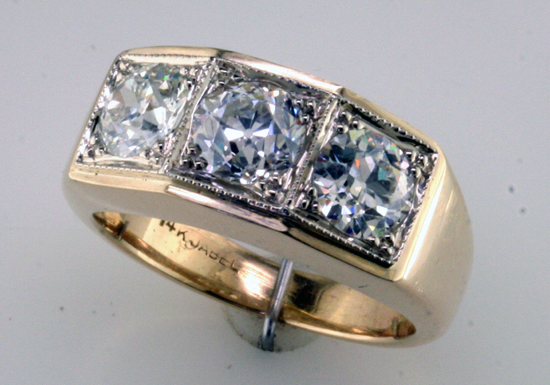
Robert M. Shipley ring, restored
Tags: American Ge, American Gem Society, diamond recutting, father to son, Father's Day, GIA, Jabel, Mardon Jewelers, Old European Cut, Robert M. Shipley, smoky quartz, smoky topaz



